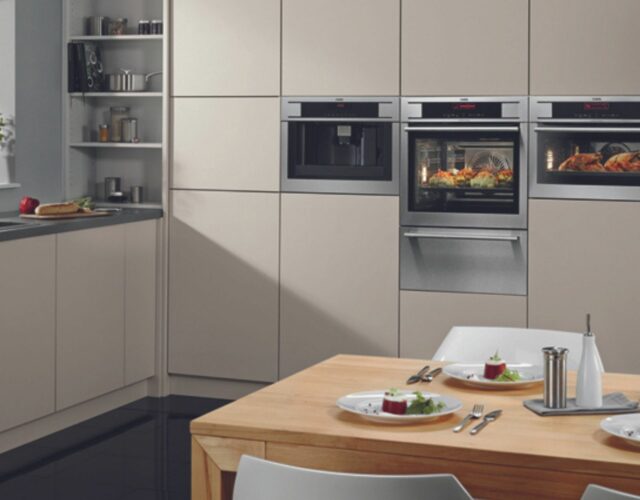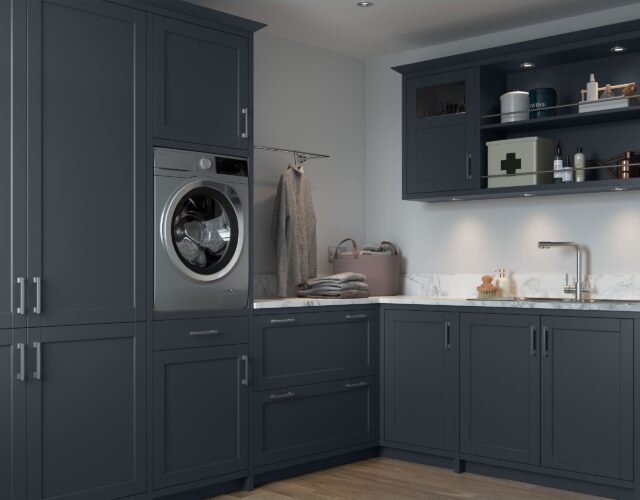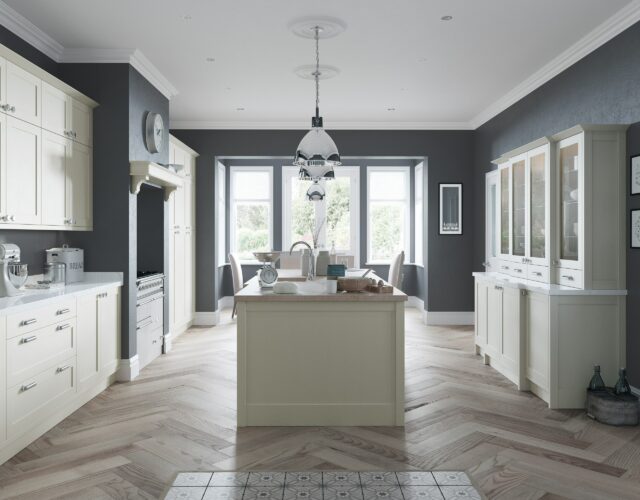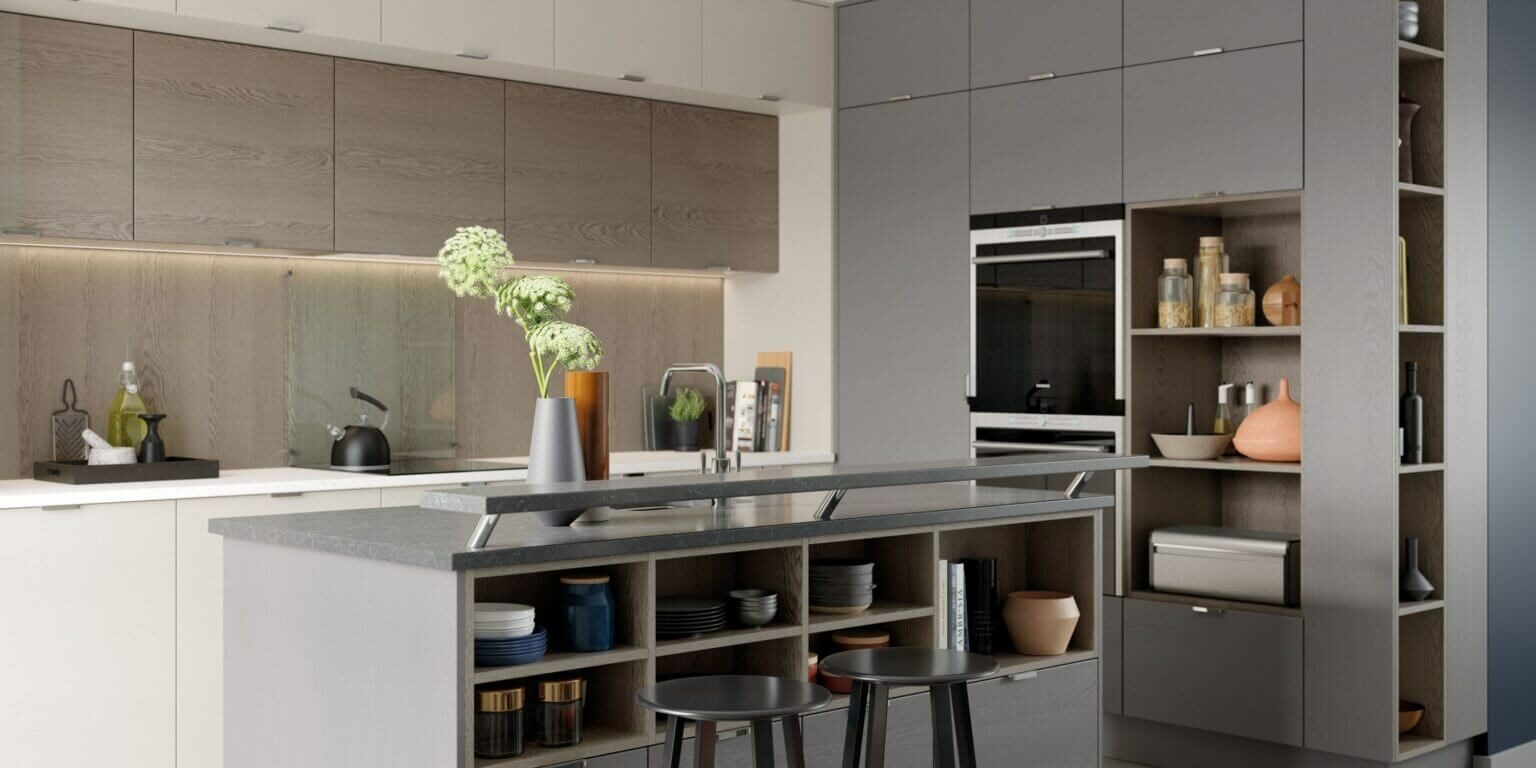

By Lara
Choosing Your Kitchen Style
How To Choose The Right Kitchen Style For Your Home
Buying a new kitchen can be one of the most significant purchases we make in our lifetime, it is not something you can just pick up off the shelf, huge amounts of time and effort go into crafting the perfect design. Nowadays the kitchen is the focal point of the home, a multifunctional space, it is essential to our daily experience and can have a huge impact on how we live our lives. With so many practical and technical requirements, kitchens are one of the most expensive rooms to furnish and with all the stress and work required you certainly don’t want to have to change your kitchen before necessary. This makes choosing the right style absolutely crucial to ensure you have a kitchen you’ll love for years to come.
Choosing an overall look to suit you and your home can seem like a horribly finite and rather bewildering decision. However, most of the choices you will need to make will come down to your lifestyle and budget. The first thing to consider is what kind of atmosphere you want to create. This greatly depends on how you will use the kitchen, for a family home you may want a welcoming and relaxed environment, alternatively for entertaining you may want to set a more sophisticated tone. Likewise, different styles require different levels of care and maintenance, which is most appropriate for you will come down to how you need to use the kitchen. In this article, we will highlight these considerations to help inform your decision.
There are many elements that go into creating a kitchen style, including doors, worktops, fixtures and fittings, lighting, flooring, wall coverings, colour schemes and even layout. Combing each aspect to create a cohesive design can seem challenging but understanding how to mix and match different elements can create a really personal and original finished kitchen. A good way to start getting an idea of how these components work together is by doing research, this will also help you to get a feel for what you like and don’t like. We recommend looking through kitchen magazines, doing online research and using a scrapbook app such as Pinterest to find and collect ideas.
At Ream Interiors we understand that choosing a kitchen style can seem daunting and it can be hard to know where to start. This article will walk you through the characteristics and features of different kitchen styles, giving you inspiration on how you can create distinctive atmospheres within each kitchen type. We will also explain some of the practical considerations and where each kitchen sits in regard to budget.
What Are The Different Types Of Kitchen Styles?
There are two primary styles generally categorised as modern/contemporary and classic/traditional. Both types offer various design nuances and can be approached differently to create a unique aesthetic to suit your tastes and needs perfectly. We will take a detailed look at these two styles to explain their typical characteristics and highlight considerations.
Modern/Contemporary Kitchen Styles
The contemporary kitchen offers a modernist and sleek aesthetic with minimal detailing and clean lines. A modern style kitchen is predominantly centred around flat ‘slab’ doors with a choice of handle or handleless designs. Handleless units emphasise the sleek aesthetic for a more contemporary feel, whereas handles can be a practical compromise between the ultramodern and traditional. Handleless styles include j-trim and ‘true handleless’.
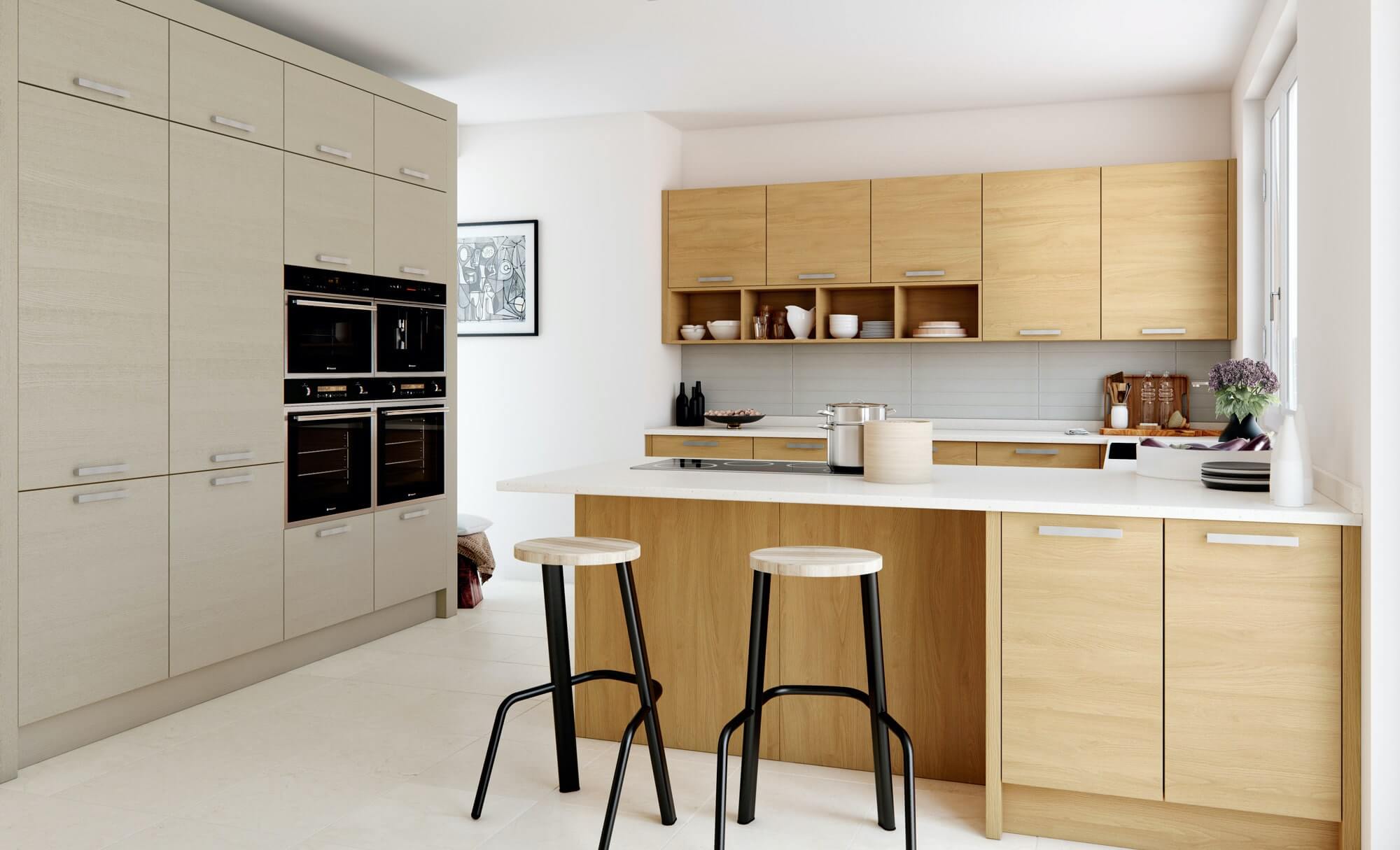
This type of kitchen comes in the widest variety of colours and finishes, from understated matt tones to metallic, stone, wood and gloss effects. A monochromatic colour palette can create a striking, modern design statement especially when paired with cutting-edge textural finishes such as slate or oxide.
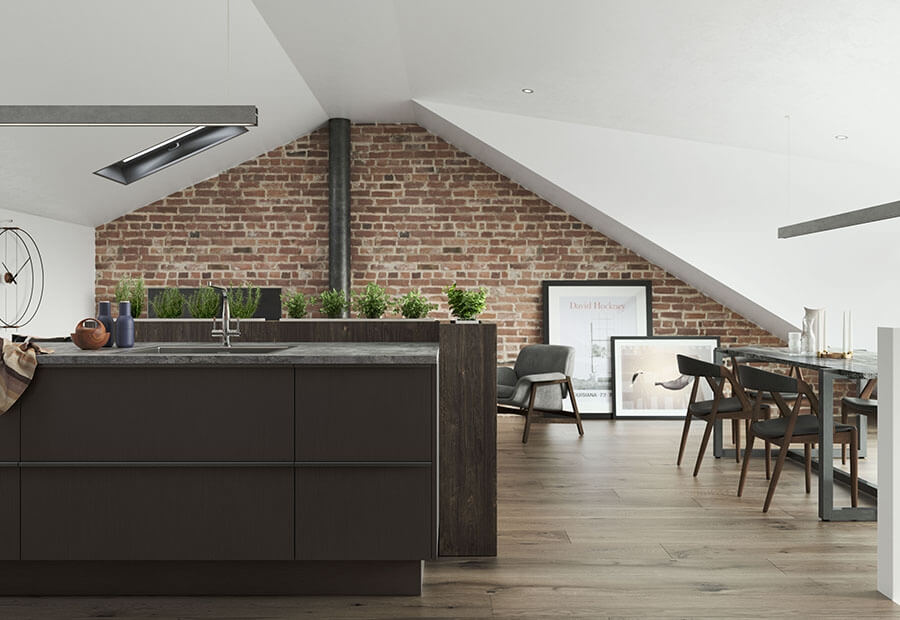
Flat panel doors also work well with two-tone colour schemes. For a more balanced and understated design pair warm or muted colours, alternatively, introduce more vibrant colour accents for a fresh and welcoming feel. Introducing light wood finishes alongside a fresh colour palette can add warmth and a contemporary Scandinavian charm.
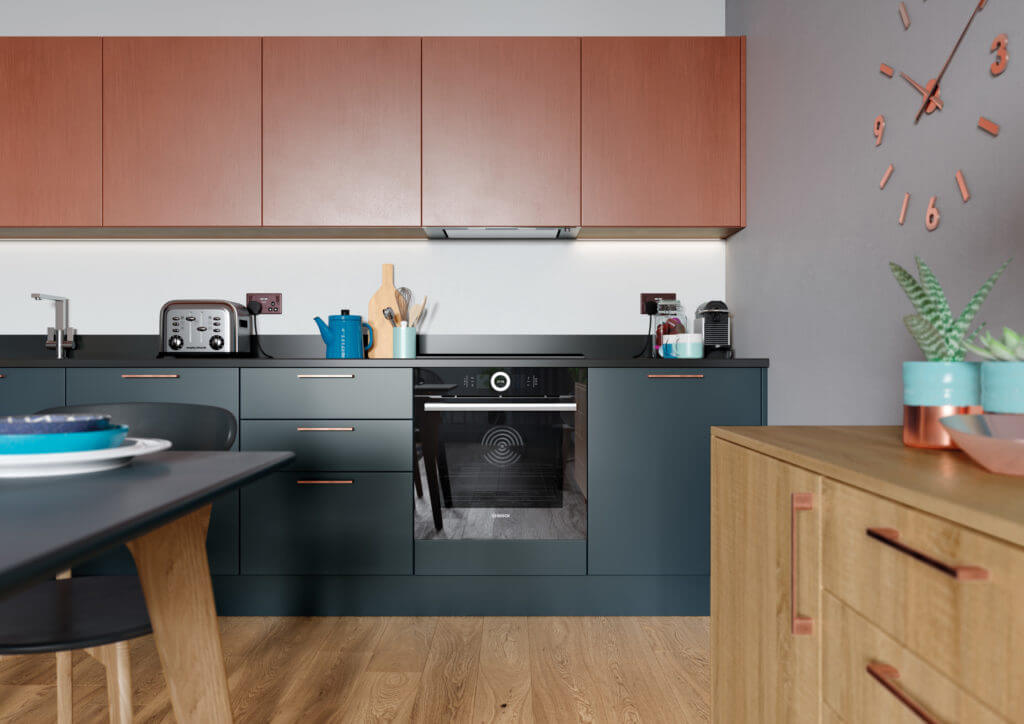
Similarly, a range of worktop materials work well with contemporary kitchen styles, with acrylic, quartz and compact laminate giving a more utilitarian, modern quality. Strikingly patterned natural stones such as marble will give a luxurious and opulent edge to a contemporary design whilst wood will feel softer and more welcoming. The same principles will apply when considering flooring and wall coverings. Wall tiles can add another dimension to your kitchen design, with a range of colours and styles to suit a contemporary look.
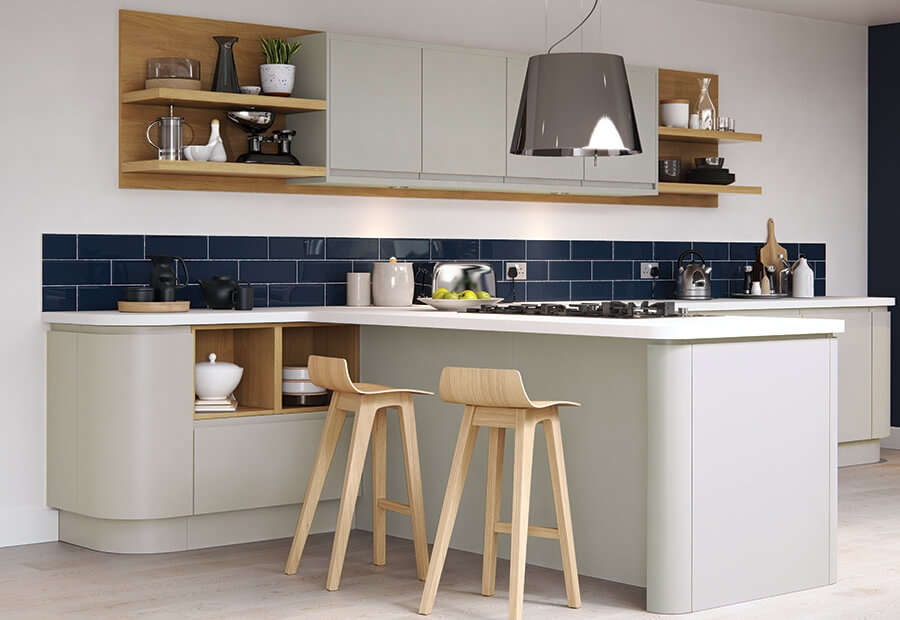
If opting for handles, go for a simple design in keeping with the smooth aesthetic. A chrome finish will maintain a subtle look, whereas black or gold handles can make a more dramatic statement.
Plinth lighting is a modern addition to a contemporary kitchen style, creating a floating effect for a true luxe, state-of-the-art feel. Pendant lights and simple downlights also work perfectly in this style of kitchen.
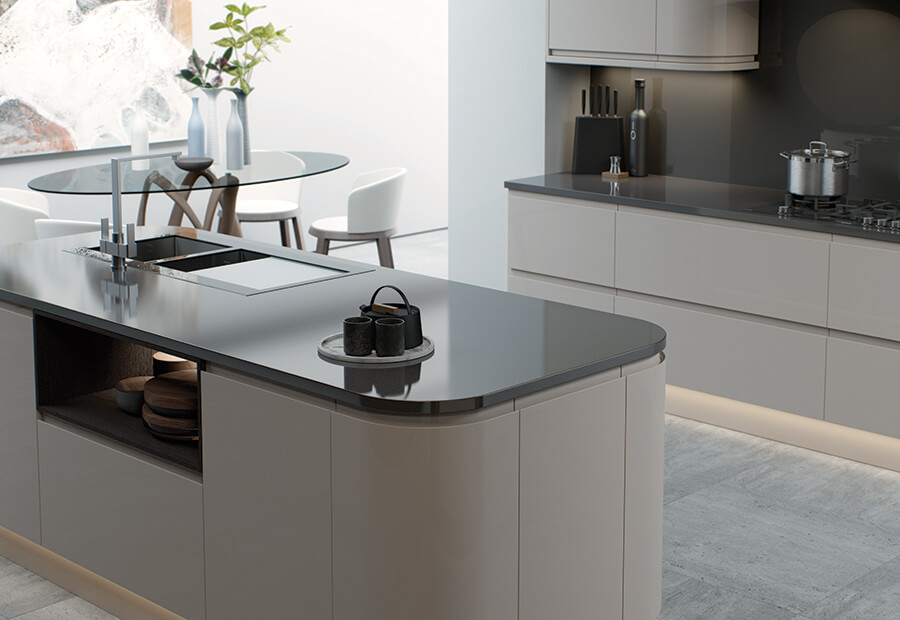
Contemporary Style Kitchen Considerations
Contemporary kitchen styles are ideal for making a modern statement and can be adapted to create a sophisticated or subtle ambience. One of the primary considerations is whether to opt for a design with or without handles.
Handleless kitchens look impressively sleek and dramatic, however, they can be trickier to operate. The method of opening uses only your fingertips or the side of your hand as opposed to the grab and pull of a conventional handle which can be particularly awkward on appliances such as fridges, freezers and dishwashers where the suction requires extra force to open. This design is generally not appropriate for anyone with joint problems in their hands/arms or those with long nails.
Contemporary style kitchens are easier to maintain and clean than classic styles. However, the difference between a handle and handleless designs is relatively minimal as the channels in a handleless design will collect dust and dirt similarly to regular handles.
The ‘true handleless’ design is more expensive than j-trim and handle options and is primarily an aesthetic decision.
Intelligent storage solutions can be integrated easily with a contemporary kitchen style, ideal for small or awkwardly shaped spaces.
Classic/Traditional Kitchen Styles
The classic style kitchen has endured in popularity for its simple and elegant design and thus it could be argued this style is the least likely to date. The traditional kitchen gives a sophisticated and timeless look to suit a range of tastes.
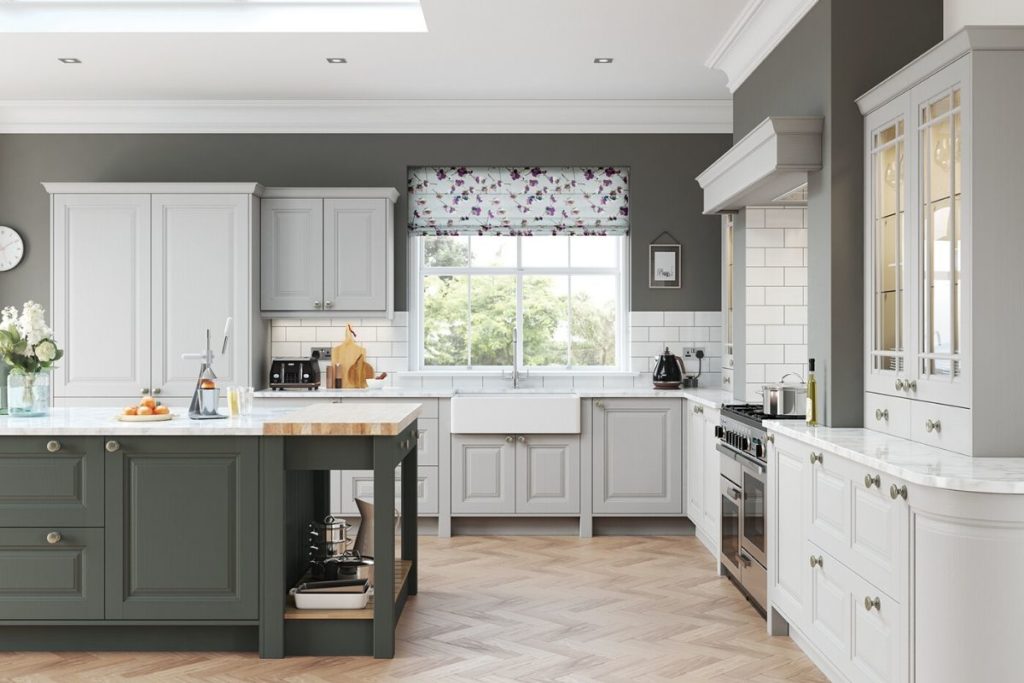
The three main door types are shaker, in-frame and raised and fielded. Shaker is the most simple design and creates an unfussy and graceful aesthetic. Raised and fielded kitchens are constructed similarly to shaker doors but feature a more decorative front panel, this can give a more traditional country kitchen feel. In-frame are the most complex, the door sits within a frame for added stability. The complexity of the construction makes them synonymous with luxury and quality, giving a highly sophisticated kitchen finish.
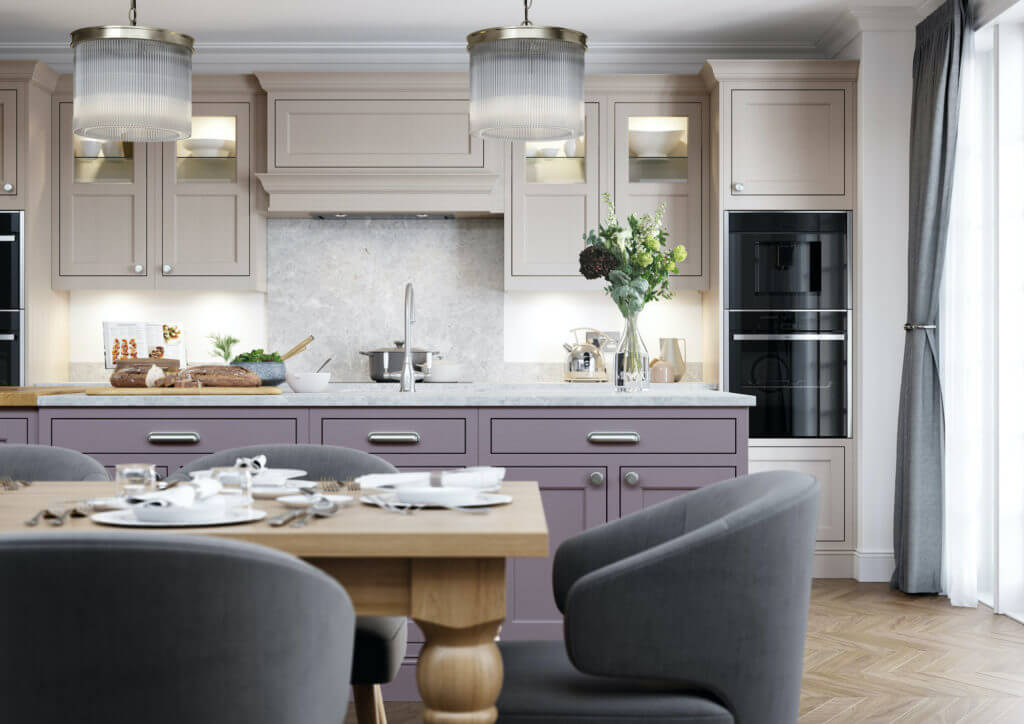
The classic kitchen tends to come in either wood or hand-painted finishes. A broad range of colour choice allows you to tailor the look of your kitchen to create a unique atmosphere. Dark colours such and navy and forest green have recently gained popularity and give an on-trend, sophisticated and contemporary edge to a classic design. Neutral greys or creams will complement the traditional style for a welcoming and timeless ambience.
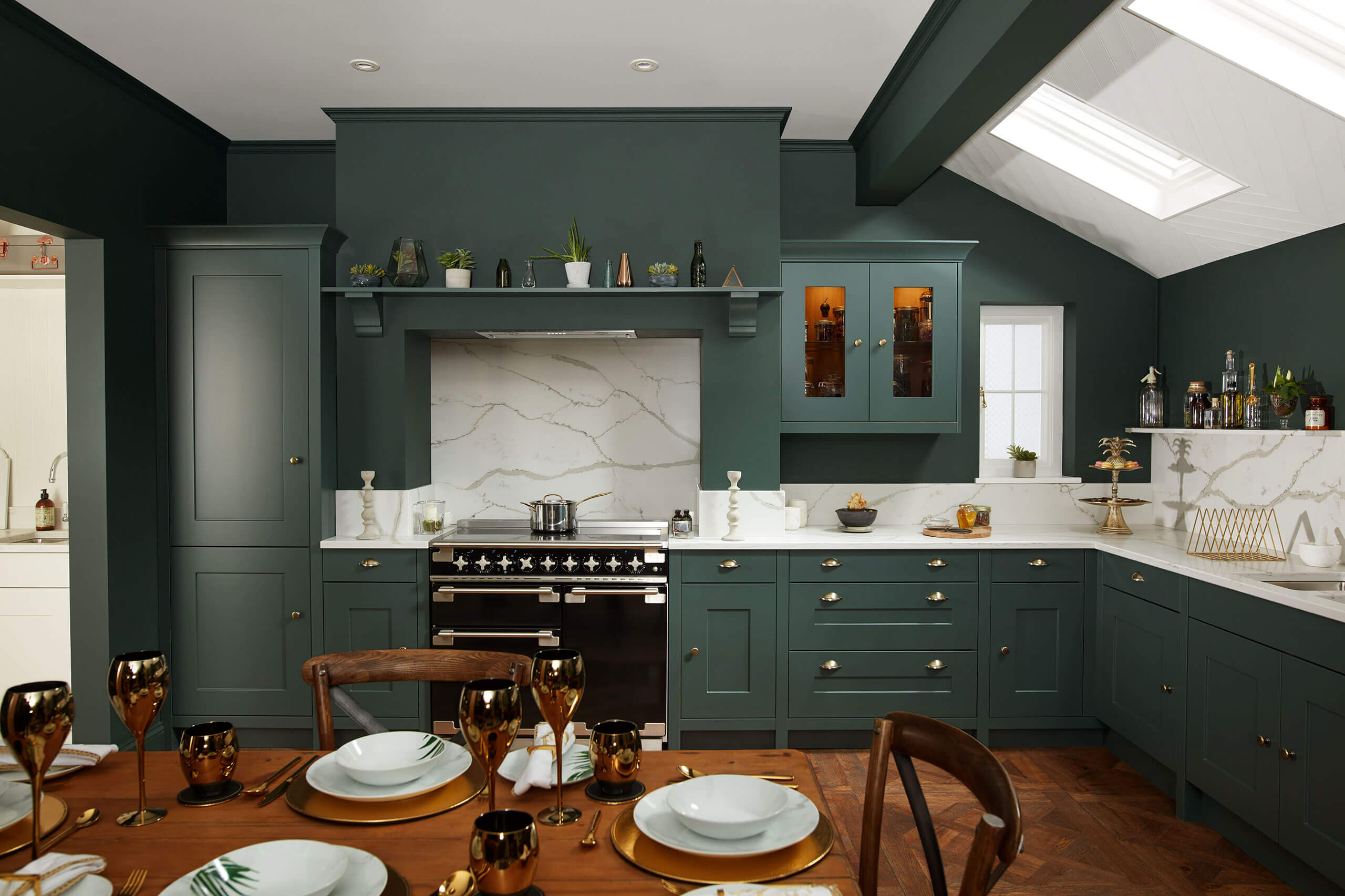
More conventional worktop types suit a classic kitchen, consider quartz, natural stones and wood worksurfaces to balance your door material and colour choices. A white quartz or marble worktop gives a bright, luxurious and contemporary feel, particularly effective when contrasted with a darker door colour. Alternatively, emphasise the country kitchen aesthetic with wooden worktops for a warm and homely space.
The finishing touches used in a classic style kitchen can have a big impact on the overall look. Tiles can be used to great effect to add a modern twist, opting for a bold wall colour will also create a contemporary feature.
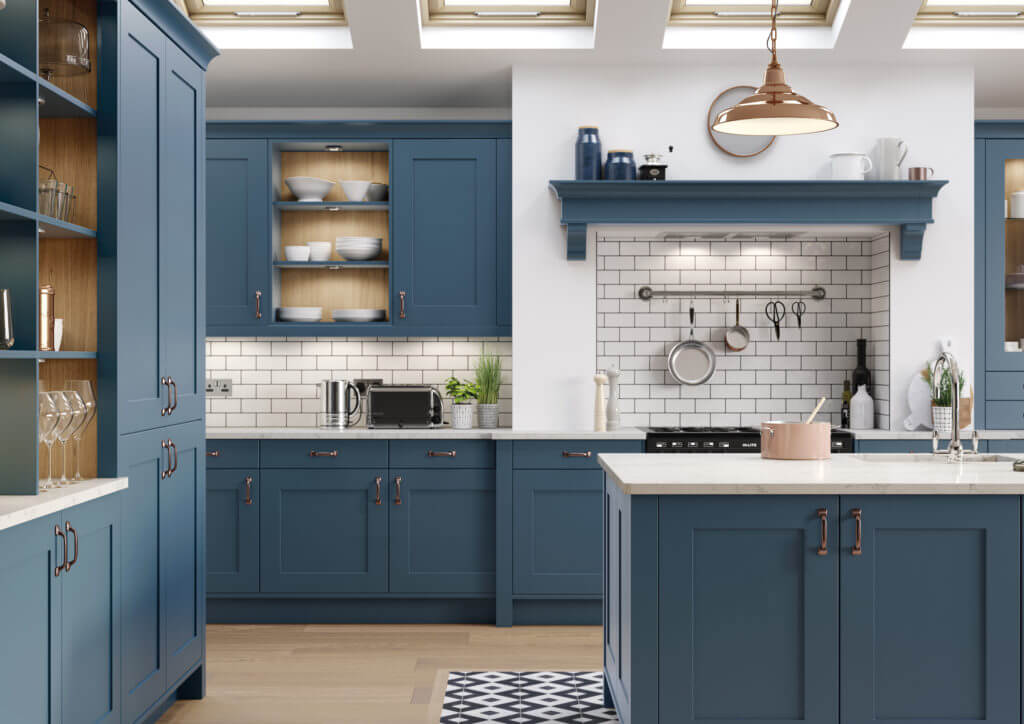
Traditional cup handles or decorative wire pulls can enhance a classic look whilst minimalist brass or gold handles stand out from the traditional design to add a fabulously modern and glamorous touch. Likewise choosing a contemporary sink and tap fittings can bring a stylish edge to a classic kitchen.
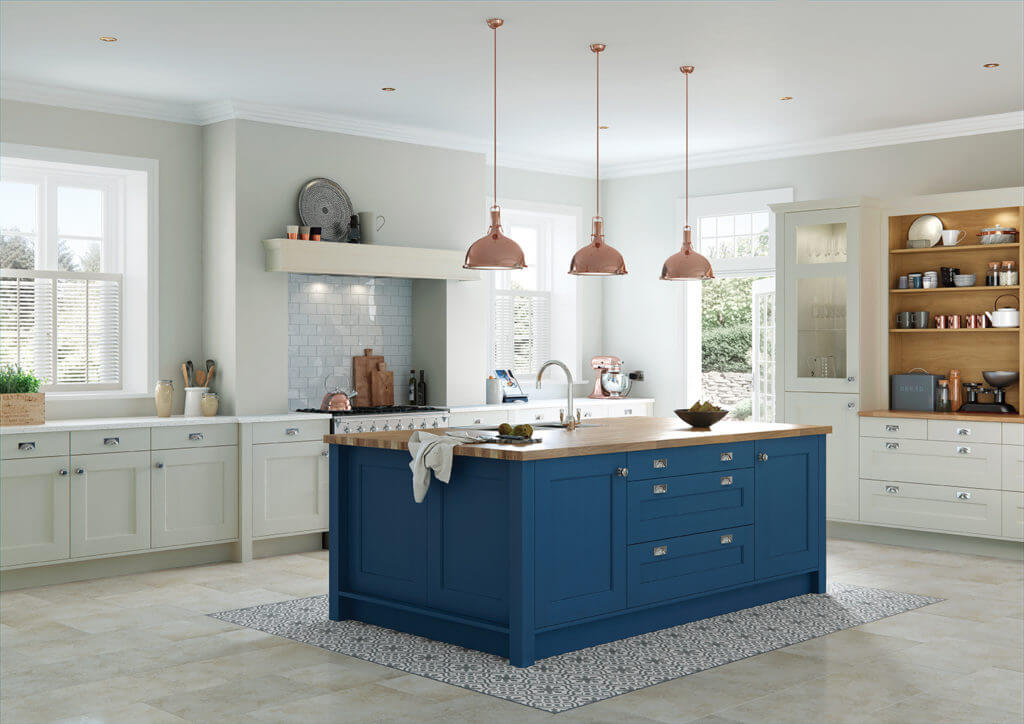
A traditional kitchen style needn’t limit you to old-fashioned lighting. Downlights are subtle enough to work perfectly in a classic environment, you can also consider including pendant lights, task lighting and even integrated display/cabinet lights for a warming and stylish ambience.Traditional Style Kitchen Considerations
Classic style kitchens offer a timeless design that can be personalised to suit your exact requirements whether subtle or flamboyant.
Shaker and raised and fielded doors are straightforward in their composition, making them simple and practical to use and maintain. The usability of an in-frame kitchen can be compromised by the smaller door opening created by the surrounding frame. This slightly restricted access limits the potential smart storage options that are available in other classic designs. The unique construction of the in-frame kitchen also leaves more corners and gaps that require cleaning.
However, the detailing and complexity of an in-frame design is unmatched by any other kitchen, boasting exceptional style and elegance. Often handcrafted, in frame kitchens are well known for their remarkable quality and durability. These benefits come at a price, with in frame kitchens costing sometimes double that of other units. The more complex fitting requirements also add time to the installation process.Trust Your Kitchen Designer When It Comes To Style
Having read this article, you will undoubtedly have a lot of information to take in. It may be that you still have questions about what style will suit you best and how to achieve the look you desire. This is where your designer is here to help. Your designer is an experienced professional, they will have a plan in place to guide you through the design journey in a systematic and organised way. They will establish a good working relationship early on to ensure you feel comfortable asking any questions and trust they understand your needs. They have a thorough interior design knowledge; they will know what works well and won’t let you make the wrong decision. A good designer will have your best interests in mind and will work hard to make sure your dream becomes a reality for a beautiful and practical kitchen that stands the test of time.
There’s a lot to learn when it comes to understanding the details that set different kitchen styles apart. This guide should have given you an introduction to modern and traditional kitchen designs to help you make a start on your new project. If you would like to know more or have some questions you’d like to ask, please don’t hesitate to contact us. With so much to consider, you can trust our design experts at Ream Interiors to provide knowledgeable advice and support should you need it. Get in touch at 01634 799 909 or book a design appointment by clicking here.


